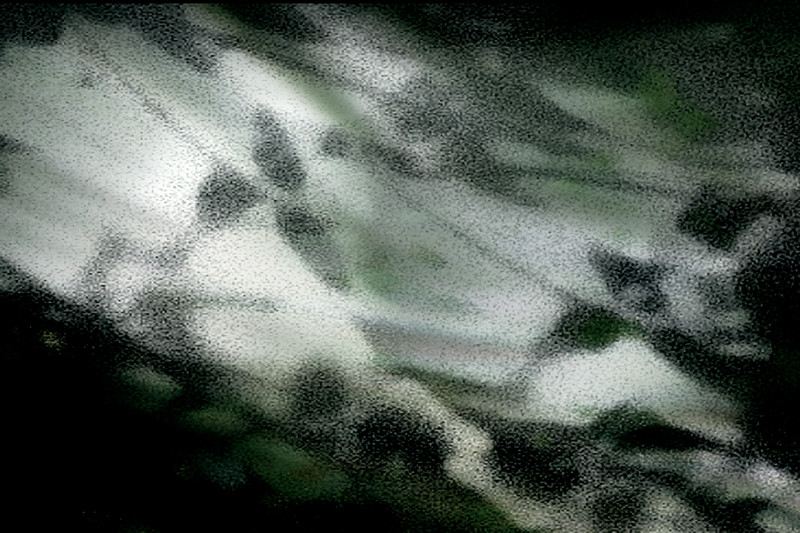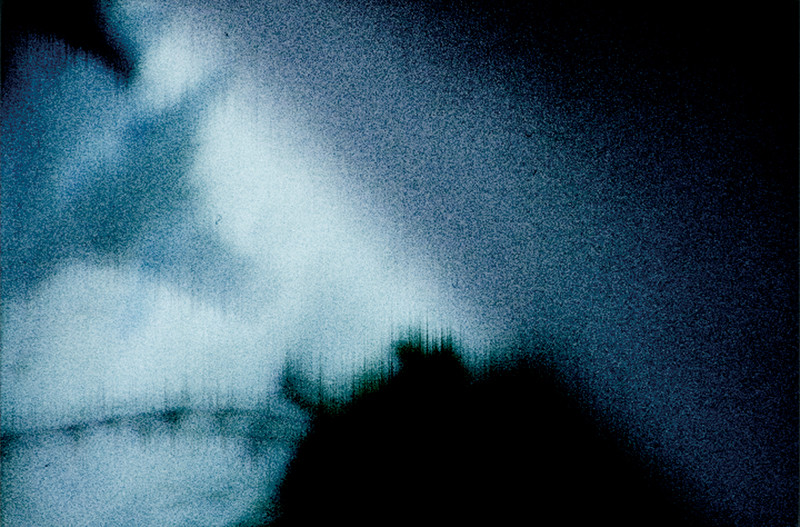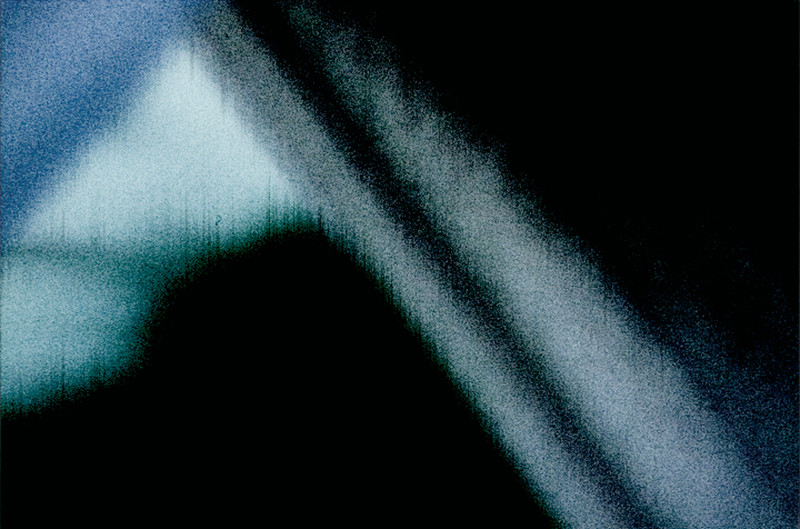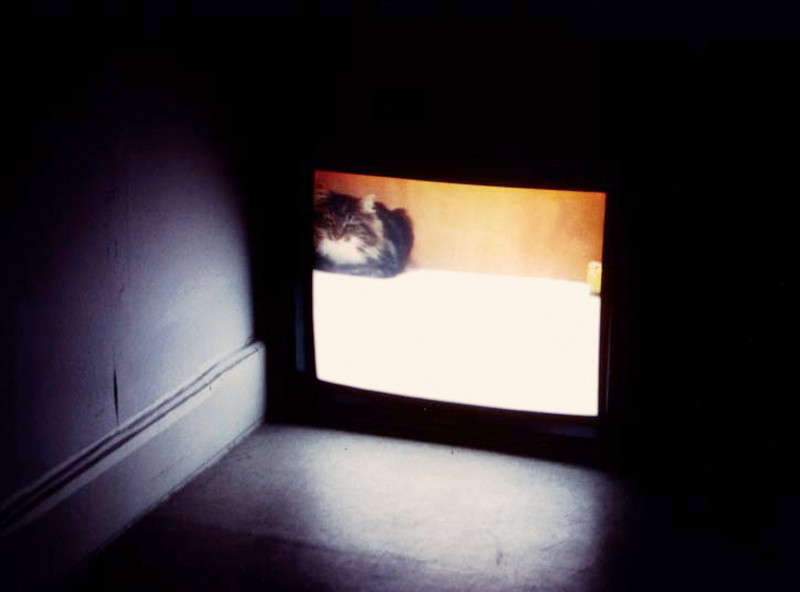[Spring 2005]
by Randolph Jordan
Frame-by-frame analysis confirms that beneath the apparent non-movement of the plant world, the most awful and violent things are brewing: heart-rending torsions, horrible intertwinings, endless growth . . . such is Man.
No moment is ever as intense as when there is no more outward bodily agitation to hide the infinitesimal speed of an inner movement animating him, which makes him grow or take root. This static quality contains a great deal of violence . . .
⎯ Michel Chion
I was leaning toward him, following his words intently. The slightest hesitation made me want to grab him by the throat and force him to talk faster. . . But I could hardly hear him. I was so wired that my hands were clawing uncontrollably at the bedspread, jerking it right out from under me while he talked. My heels were dug into the mattress, with both knees locked . . . I could feel my eyeballs swelling, about to pop out of the sockets . . . It was hard to move my jaws; my tongue felt like burning magnesium . . . I couldn’t move. Total paralysis now. Every muscle in my body was contracted. I couldn’t even move my eyeballs, much less turn my head or talk . . . Death. I was sure of it. Not even my lungs seemed to be functioning. I needed artificial respiration, but I couldn’t open my mouth to say so. I was going to die. Just sitting there on the bed, unable to move . . .
⎯ Hunter S. Thompson
Hunter S. Thompson describes the experience of having ingested a few too many drops of adrenochrome, the pure extract of a living human adrenal gland. However, he might just as well be describing the emergence of motion pictures that gravitate toward stillness, compressing all the energy contained within the expectant rush of anywhere between 18 and 29.97 frames per second into the singularity of a static image, confronting us with the experience of movies that don’t move. The state of mind that Thompson describes is indicative of humanity’s unquenchable thirst for activity, a desire for things to move ever more quickly until motion itself becomes impossible and we find ourselves paralyzed, our minds racing violently while our bodies rest perfectly still. His description can also be read as a metaphor for a reversal of the birth of the motion picture out of the static photograph: a return to the stillness at the heart of motion. For Chion, film has a tremendous potential to capture the violence that lurks at the root of the still image. This is the violence of life that cannot be readily perceived, life that brings movement to a point so close to stasis that the cycle of inhalation and exhalation is brought to a halt. It is a life that might be revealed through time-lapse photography, but it is no less inherent in representations of stillness. All images projected with motion-picture technologies have a particular kind of life that does not exist in a photographic print. They breathe, and this breathing calls attention to itself when it can be felt in the absence of movement apparent within the profilmic event.
The recent video works represented in this special issue of CV capture the spirit of the tension between still and moving images. Or, perhaps more appropriately, they release this spirit from the eternal cage of the photographic still, while reining it in from the relatively unbound freedom of the cinema. Cat and Bird in Peace (1996), an early work by David Claerbout, is exemplary of the aesthetic effects achieved by all of the works featured here. Feeding off the idea of life as it exists between movement and stasis, a cat shares the frame with a little yellow bird, each seeming indifferent to the other. There is an obvious tension in the implied potential violence that would be apparent even if this were a still photograph. However, in a photograph this tension could not be resolved. In the context of a video installation, the possibility of action between the cat and the bird is clear and present. Though they remain quite still, the slight movements of each animal substantiates our belief in their life, thus magnifying the tension of the possible violence, which never erupts on screen. These animals breathe, and an awareness of their life creates tremendous tension in their stillness. The peace suggested in Claerbout’s title implies its opposite.
Claerbout’s animals are domestic, and it is in the peace of the home that the turbulence of life is so often played out between its occupants. And when these occupants are increasingly of the technological variety, domestic space becomes the new frontier for installation work. Galleries are few and far between; people need to be reached where they live. When you can hang a video display on the wall with the ease of a photograph or painting, the gulf that stretches out between art and life gets yet a little narrower.
Delving deep into the embryonic temporalities of new and hybrid media, the recent video painting series by Montreal-based New Media artists NomIg. (2004) negotiate the distance between stillness and movement to bring peace back to the realm of turbulent stasis. The works offer forms that hover somewhere between the figurative and the abstract, shifting ever so slightly, like clouds across the horizon of our expectations. Designed to hang as self-contained images on the walls of gallery or domestic spaces, they are very much contextualized as paintings or still photographs. In this respect they are lacking the tension inherent in works from which we expect motion. Instead, they initially appear static, and the perception of motion becomes a surprise. Here is a return to that mythical first moment of cinema spectatorship when people reacted to the appearance of motion where there had once been only stillness. The appearance of motion here is so gentle that it creates a sense of wonder, even of questioning as to whether or not the image is, in fact, moving. Like the watched pot that never boils, we look away for a moment and realize that we have been witnessing the emergence of the boil all along. In this respect the video paintings reveal the life at the heart of all the works mentioned here, that life which exists on the borders of perception but which nevertheless acts as the foundation of the world.
These works test the limits of their contextualization as motion pictures, and build bridges into the future of cinema by invoking the myths of the medium’s birth from stillness. Each in its own way offers the intensity of immobility made possible by a medium premised on our expectations of motion.
Hunter S. Thompson, Fear and Loathing in Las Vegas (Frogmore: Paladin, 1972), pp. 124–25.
Randolph Jordan is a doctoral candidate in the Interdisciplinary Humanities program at Concordia University in Montreal. He is currently pursuing research toward a dissertation on the intersections between approaches to sound theory in film studies, acoustic ecology, and electroacoustic music. For further info, visit: http://www.soppybagrecords.net/randolph-jordan




